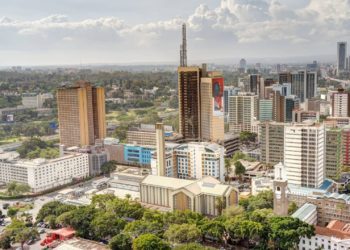The Financial Reporting Centre is Kenya’s Financial Intelligence Unit established under section 21 of the Proceeds of Crime and Anti-Money Laundering Act (POCAMLA), 2009. Its primary objective is to assist in the identification of the proceeds of crime and the combating of money laundering and the financing of terrorism. The center undertakes operational analysis, strategic analysis and dissemination of financial intelligence both spontaneously and upon request. Operational analysis involves receipt and analysis of suspicious transaction reports and any other information related to Money Laundering and Terrorist Financing and associated predicate offences while the strategic analysis function of the center involves identifying risks and trends relating to financial crimes.
During the week, the Financial Reporting Centre published the Money Laundering and Terrorism Financing Trends and Typologies Report 2025 which made shocking revelations on how massive amounts of suspicious money is being moved through the financial sector. The Center received filings of KES 6.98 tn flagged as suspicious financial transactions over a three-year period to 2023. From the data received from various reporting institutions, 91.0% of the cumulative amount of KES 7.02 tn originated from Commercial and Mortgage banks. The tactics employed by suspected criminals include the use of shell companies to hide true ownership and source of funds and splitting large deals into smaller amounts to avoid detection.
Following the Financial Action Task Force’s decision to grey-list Kenya due to its inadequacies to report and act on suspicious transactions, Kenya is making efforts to fast-track structural reforms to build a sustainable and resilient Anti-Money Laundering framework that goes beyond the optics. Key strategies that are in the pipeline include strengthening legal and regulatory frameworks where the Kenyan government has accelerated amendments to the Proceeds of Crime and Anti-Money Laundering Act and related regulations. For instance, the stricter monitoring of Designated Non-Financial Businesses and Professions such as Real Estate firms, which are seen as soft targets for money laundering. These reforms are aimed at expanding the scope of entities under surveillance, increasing penalties for non-compliance, and fast-tracking asset recovery.
Second, empowering of regulatory agencies. For instance, agencies such as the Central Bank of Kenya and Financial Reporting Center are receiving both increased funding and broader investigative powers. The CBK, for instance, now requires commercial banks and fintech firms to perform enhanced due diligence for high-risk transactions and politically exposed persons. Third, Kenya is taking is the integration of Regulatory Technology and AI-driven surveillance tools. These systems allow financial institutions to flag suspicious activity in real-time, improving compliance efficiency while reducing manual loopholes. Kenya is working toward the centralization of Know-Your-Customer data, making it easier for institutions to verify client identities and transaction histories seamlessly across platforms.
By closing regulatory gaps, embracing data and technology, and rebuilding public trust, Kenya is building an ecosystem where illicit finance is harder to hide, easier to trace, and less likely to thrive. The battle against illicit finance is a strategic economic priority. Kenya’s reforms are not about avoiding sanctions but building a stable, trustworthy and globally connected economy. By strengthening its shield today, Kenya is securing its financial future for generations to come.


















